Xiaomi A Pro 2025 is an affordable QLED model that works well as a basic television in the home. The Google TV operating system deserves attention. Thanks to it, one can easily use apps like Netflix and YouTube. The interface is clear and user-friendly, and the ability to search by voice in Polish allows for quick access to content of interest. The picture on the A Pro 2025 is sufficient for everyday television watching or film viewing. Smooth tonal transitions and the enhancement of older materials make even lower resolution content look good. However, the screen brightness may disappoint in very sunny rooms – here the television performs mediocrely, but it fares much better in a dimly lit room. The television is rather suitable for occasional gaming. Low input lag ensures quick response, which is important for dynamic games. However, the 60 Hz panel and lack of more advanced features may not appeal to gamers seeking perfect image fluidity. On the other hand, A Pro 2025 may be sufficient for those who play from time to time. Not everything works perfectly. When connecting the television to a computer, the fonts are difficult to read, which can hinder text work. The Google TV system itself can be a bit slow, which sometimes complicates the quick switching of applications. Xiaomi A Pro 2025 is a simple and functional television that is suitable for daily television viewing and using apps. It has its flaws, such as average brightness and font readability issues, but at this price, it offers quite a lot. It is a good choice for those looking for budget equipment for basic uses.
- Matching (Score)
- Our verdict
- TV appearance
- Where to buy
- Contrast and black detail
- HDR effect quality
- Factory color reproduction
- Color reproduction after calibration
- Smoothness of tonal transitions
- Image scaling and smoothness of tonal transitions
- Blur and motion smoothness
- Console compatibility and gaming features
- Input lag
- Compatibility with PC
- Viewing angles
- TV efficiency during daytime
- Details about the matrix
- TV features
- Apps
- Playing files from USB
- Sound
XIAOMI A PRO 2025 vs Hisense U7Q
Direct compare
U7Q / U78Q

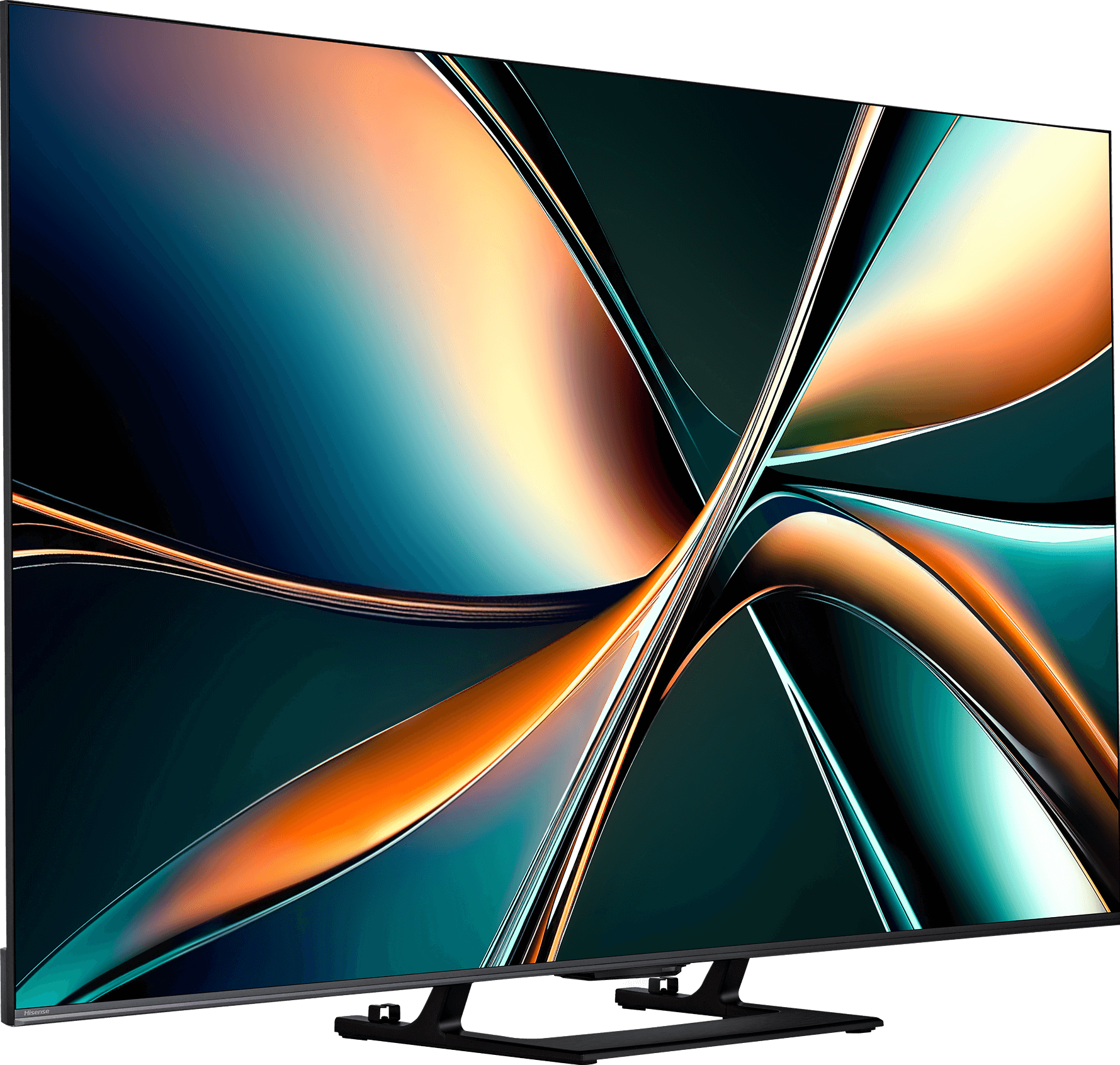
Panel type: LCD VA
Resolution: 3840x2160
System: Google TV
Model year: 2024
Complete the survey to find out the result

Panel type: LCD VA
Resolution: 3840x2160
System: VIDAA
Model year: 2025
Complete the survey to find out the result

Overall rating
5.6
7.2
Movies and series in UHD quality
5.7
6.6
Classic TV, YouTube
6.1
6.8
Sports broadcasts (TV and apps)
5.1
6.5
Gaming on console
6.2
8.0
TV as a computer monitor
1.0
8.8
Watching in bright light
3.8
6.2
Utility functions
6.5
9.0
Apps
9.6
7.7
Sound quality
6.0
7.8
Complete the survey to find out what fits your preferences
Advantages
Advanced Google TV operating system
Voice control in Polish
Good image processing
High native contrast
Attractive price
Great contrast and deep blacks
Very good fluidity of tonal transitions (close to reference level)
High brightness
Support for 4K 144 Hz and even 240 Hz in Full HD
VRR, ALLM, G-SYNC – a complete package for gamers
Low input lag
Pleasant sound with light bass
Many classic TV features built into the VIDAA system
Disadvantages
Low brightness
Poor font readability
The system can lag
No support for HGiG (makes setting HDR on consoles difficult)
Brightness management issues
Poor viewing angles – typical for VA panels
Closed VIDAA system – lack of certain applications
Our verdict
The Hisense U7Q is one of the most interesting Mini-LED televisions in its price segment, clearly demonstrating that Hisense is beginning to make a mark in the market not only through its price-to-performance ratio but also due to its increasingly refined picture quality. Let's start with what truly impresses: the contrast and black levels are at a level that not long ago was unattainable in this price range. Combined with smooth tonal transitions, solid brightness, and a fast 144 Hz panel, the U7Q becomes a television that excels in both movies and gaming. Gamers will find almost everything they could expect here – variable refresh rate (VRR) support, automatic low latency mode (ALLM), very low input lag, and even 240 Hz in Full HD. All of this makes the U7Q compatible with both next-gen consoles and PCs. However, there are some weaker points. With HDR content, one might say: "untapped potential" – you might ask why? The television, due to its algorithms, dims small bright elements or over-emphasises them, which can ruin the viewing experience. There is also a lack of support for HGiG, a feature that would allow for better calibration of the console with the television regarding HDR. In summary, briefly – the Hisense U7Q is a very versatile and complete television that has its imperfections but makes up for them in many key aspects. For gamers, for the occasional movie viewer, for someone looking for good equipment for everyday use – it is one of the most cost-effective offerings in 2025. You just need to know what compromises you are signing up for – and then it will be hard to be disappointed.
TV appearance





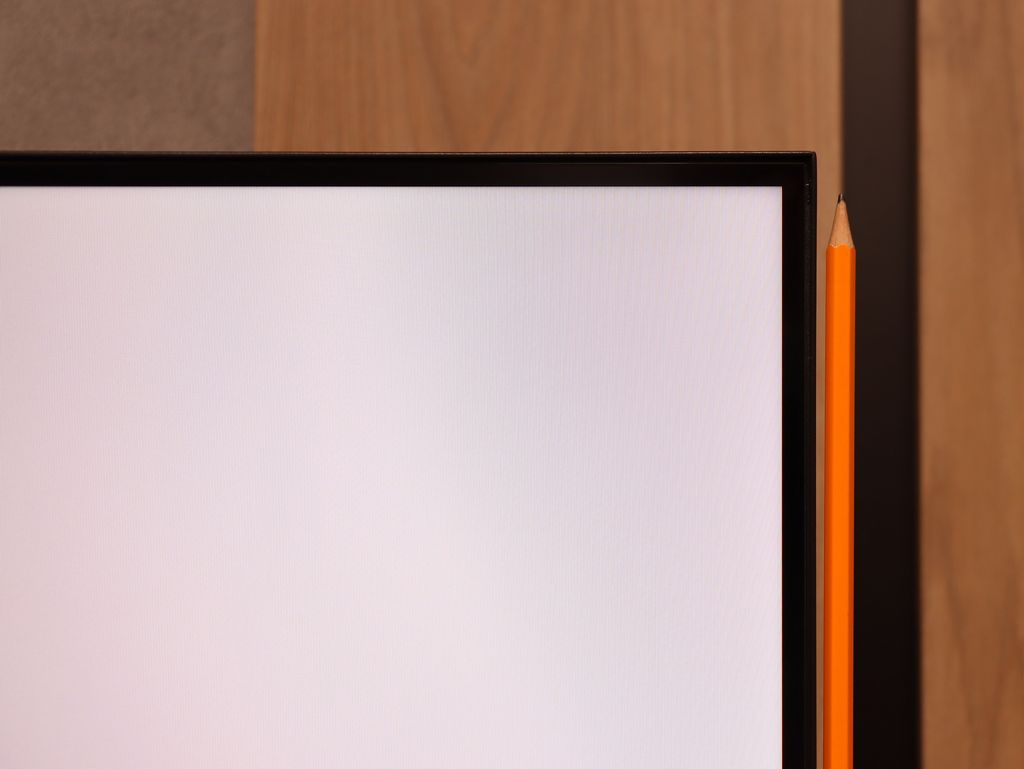
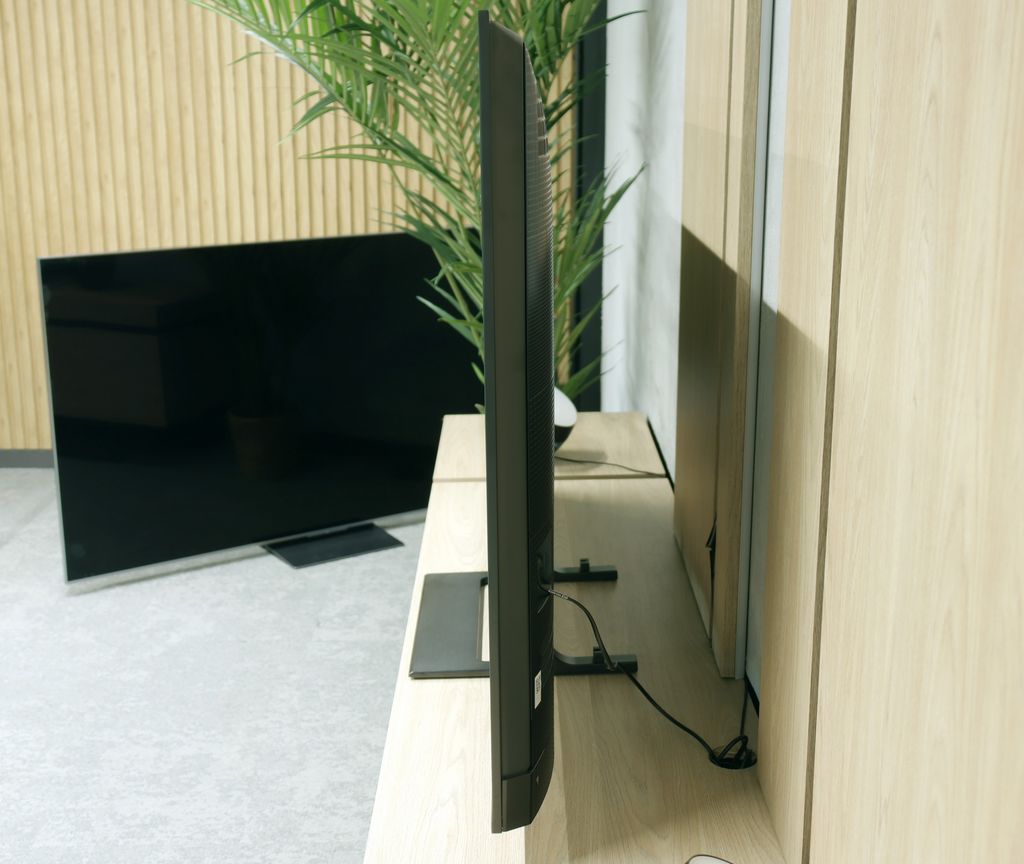
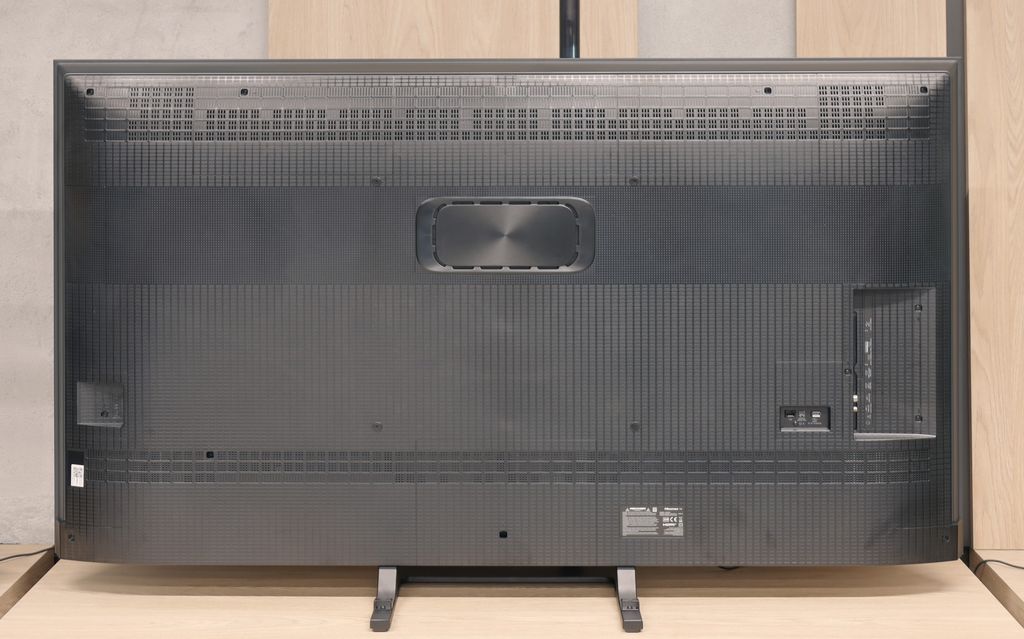
Contrast and black detail
5.9/10
7.5/10
Local dimming function: No
Local dimming function: Yes, number of zones: 220 (10 x 22)
Contrast:

Result
5,950:1

Result
6,300:1

Result
5,200:1

Result
5,100:1

Result
5,150:1

Result
278,000:1

Result
28,800:1

Result
11,100:1

Result
10,800:1

Result
6,250:1
Halo effect and black detail visibility:


Xiaomi A Pro is equipped with a VA matrix, which inherently offers significantly better black depth and colour intensity compared to IPS panels, especially in dimly lit conditions. Based on the conducted tests, the contrast measurement tool indicated a maximum value of around 6000:1. This is a solid result, ensuring good separation of image elements in darker scenes. An example can be the film Oblivion, where the television performed excellently in separating light and dark areas, enhancing the visual effects. Unfortunately, the television does not support local dimming technology, which is an obvious fact in this price range. This becomes particularly evident in more challenging scenes, such as those from the film Sicario 2. In such moments, the black loses intensity and starts to resemble a rather navy shade. The lack of dynamic dimming of image segments causes details that should be deeply darkened to remain slightly illuminated.
The U7Q is a television with Mini-LED backlighting – just like the PRO version. The difference? The version without the suffix simply has fewer dimming zones. In our 65-inch model with a VA panel, we counted 220 of them. And although this doesn't make as much of an impression as in the U7Q PRO, it still looks very good on paper for this price range. Alright, but how does it perform in practice? Surprisingly well. The contrast in the U7Q can reach as high as 300,000:1, which gives a really solid black effect. In many scenes, it's hard to find fault – the picture has depth, and the highlights are well separated. Of course, Mini-LED is not OLED – so there are certain limitations. In very challenging scenes with a lot of dark details, the television sometimes either "eats" them, leaving a nice black, or slightly brightens the background, which can cause a halo effect. This is normal in this technology, and one must take it into account. Despite these minor drawbacks – the contrast in the U7Q performs really well.
HDR effect quality
3.2/10
4.4/10
Luminance measurements in HDR:

Result
205 nit

Result
220 nit

Result
243 nit

Result
213 nit

Result
237 nit

Result
521 nit

Result
160 nit

Result
351 nit

Result
98 nit

Result
674 nit
Scene from the movie “Pan” (about 2800 nits)


Scene from the movie “Billy Lynn” (about 1100 nits)


Static HDR10


Dynamic: HDR10+
Dynamic: Dolby Vision


HDR luminance chart:
Hisense U7Q
Luminancja HDR
Luminance of RGB colors
XIAOMI A PRO 2025
Luminancja HDR
Luminance of RGB colors
In the HDR category, the television Xiaomi A Pro is, to put it plainly, lacking. Under ideal conditions, it offers brightness at around 250 nits. This is a poor result; however, in this price range, many competing models offer similar or lower values. Such brightness is too low to fully realise the potential of HDR content. In practice, this means that the image does not gain the appropriate depth and intensity expected from high-quality HDR. These values are more characteristic of standard dynamic range (SDR), which means that the true HDR effect remains beyond the reach of this model, and scenes that should stand out with spectacular brightness and contrast seem flat and lacklustre. However, for its price, the television offers good coverage of the DCI-P3 colour gamut at 92%, thanks to the use of quantum dot technology (specifically PFS LED). This results in vibrant and saturated colours, which will appeal particularly to gamers and film enthusiasts who appreciate richer shades and better colour reproduction compared to traditional televisions without this technology.
Since the algorithms responsible for blacks are performing quite well, we expected a similarly good effect regarding brightness and overall HDR quality. Unfortunately – here we have to disappoint you a bit.
The U7Q is a sufficiently bright television – under the best conditions, it can achieve around 800 nits, which indeed impresses on some scenes, especially in scenes like those from the film The Meg. Bright areas can shine, and the HDR effect is noticeable. The problem arises when there are very small, bright elements on a dark background – for example, in Sicario 2 or in the second scene from the film Life of Pi. In such moments, the dimming algorithms work too aggressively. Yes, the blacks look great then, but the brightest points can almost completely disappear, causing the HDR effect to vanish and the details to be barely visible. It's just the nature of this technology in this price segment.
As a consolation, it's worth mentioning that the U7Q is marketed as QLED (in practice, a PFS layer is used, which works very similarly), and it is indeed capable of displaying a wide colour palette – a DCI-P3 coverage of around 94% is a very good result for this class.
Factory color reproduction
5.1/10
6.3/10


Factory Mode
After calibration
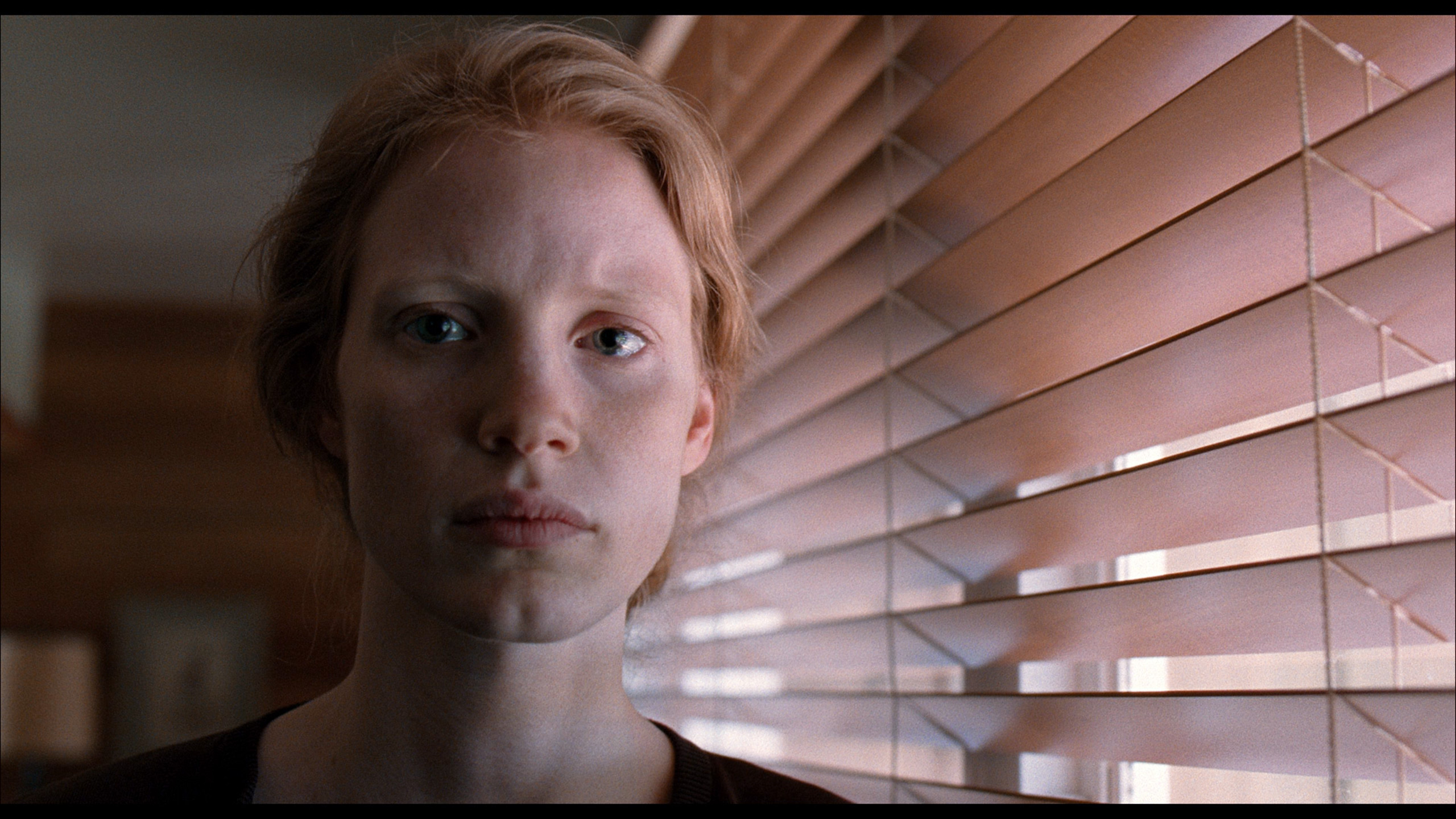
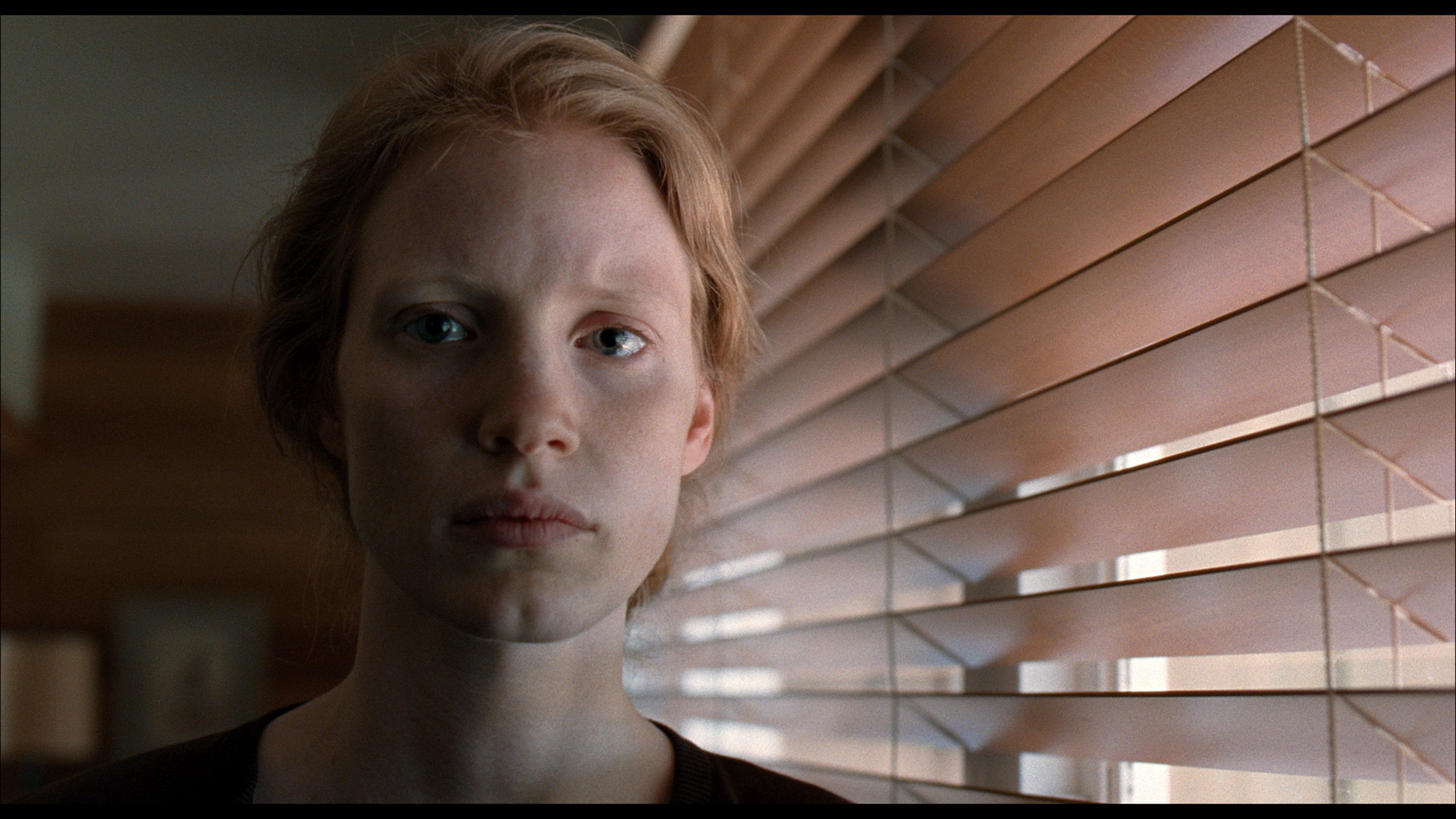
Factory Mode
After calibration
The Xiaomi A Pro 2025 television has been tested in movie mode, which offers the best colour reproduction straight out of the box. However, it is worth noting that it is not free from flaws. Analysing the white balance, it can be observed that the values for green are in the negative. This phenomenon leads to some distortions in the shades of white, and with pure white, the graph shows clear deviations. The over-contrasted image results in inappropriate tonal transitions in red, negatively affecting the quality of colour display. Generally, in the image below, it can be seen that the overall scenery before calibration acquires pink hues. Additionally, when analysing gamma contrast, the graph is significantly below the 2.4 value, suggesting that the television overly emphasises dark tones, and the brighter areas of the image may be less vivid. Furthermore, the EOTF curve shows a strong peak at the beginning, which can lead to a loss of detail in bright scenes and an unpleasant feeling of over-drawing. These aspects indicate a need for further calibration to achieve a more balanced colour reproduction and improve the overall image quality. Users who expect precise colour reproduction may be forced to take measures to adjust the television settings to achieve more realistic and natural visual results. In the xiaomi tv a pro 2025, the factory colour settings in Xiaomi are average and may require calibration. After proper colour adjustment, the image gains a natural and vibrant colour palette, much closer to cinematic standards. It is worth adding that the issue of inaccurate colour reproduction is typical for many televisions in this class, meaning it is not a flaw unique to the Xiaomi A Pro 2025 TV. For those who value perfect colour reproduction, professional calibration will prove to be a key element that enhances the overall image quality.
We tested the U7Q in the best possible picture mode, which is Filmmaker Mode. This is the mode that is supposed to provide the most "filmic" and creator-intended experience – right out of the box. Unfortunately… even this professionally sounding name does not guarantee a perfect picture.
In our unit, the problem lay in the incorrectly set white balance. Both in HD and 4K content, the picture had too much blue and red, which caused the screen to take on a slightly rosy tint. It didn't look terrible, but it was noticeable – especially in bright scenes and white backgrounds. This alone could perhaps be forgiven, but the biggest problem is managing brightness in HDR content. The EOTF curve from measurements confirms what we saw earlier during scene tests: the television can overly darken the smallest bright elements, causing them to nearly disappear, or on the contrary – excessively brighten the brightest ones, which affects the naturalness of the picture.
Color reproduction after calibration
7/10
7.4/10




Now it's time to check how the Xiaomi A Pro 2025 television has performed after calibration. The biggest beneficiary of this process is the white balance. After the calibration was conducted, all previous errors were corrected in both HD and 4K content, and most errors no longer fall significantly outside the value of "2". This means a much more balanced and natural colour representation, which certainly affects the viewing comfort. In terms of gamma, the drop was significantly reduced, resulting in a more consistent tonal representation across various scenes. Nevertheless, the EOTF curve has not been significantly improved due to a lack of effective control over dynamic tone mapping. This limitation means that there are still some issues with detail reproduction in bright scenes, which may affect the perception of certain materials. However, despite these minor shortcomings, the overall shape of the image is definitely better after calibration. The television has gained in quality, and the improved white balance along with reduced gamma issues allows users to enjoy a more realistic and pleasant visual experience. Further adjustment of settings may enhance image quality even more, but even now the television demonstrates its capabilities, meeting the expectations of many users.
Thanks to specialised tools, we managed to correct the colour quality in SDR content to nearly perfection. In materials with lower dynamic range, the delta E errors dropped below 0.5, which can be regarded as an almost reference result. The picture on television, YouTube, or classic Full HD looks really very good after calibration. Alright – but where did we not manage to improve the image so easily? Primarily, it concerns HDR quality content. Although we managed to somewhat 'tame' the white balance and eliminate pink tints in most scenes, unfortunately, we no longer had full control over brightness management. We set the local dimming settings according to the best observations – SDR: Medium, HDR: High – but the U7Q still did everything a bit its own way. There were still cases of excessive dimming or brightening of details that calibration simply could not eliminate. And although the overall reception of the content is significantly better, one must reckon that the U7Q will always have something to say at the end with an 'but'.
Smoothness of tonal transitions
9.3/10
9.9/10












During the fluidity tests of tonal transitions on the Xiaomi A Pro 2025, the gradation proved to be close to perfect. In most of the test sequences, there were no noticeable issues. Only in the scene with red water did very cosmetic imperfections appear, which, however, have little impact on the overall image quality. Both colourful and grey gradients were reproduced with almost perfect precision, making this television model a very good choice for those who pay attention to this particular feature of a TV.
The U7Q performs remarkably well when it comes to tonal transitions – we can confidently say that it is at an almost reference level, which is why this television receives one of the highest possible ratings in this category from us. Colour blending is smooth, clean, and without visible bands. In the majority of scenes, everything looks simply perfect, and any minor imperfections may only appear in very specific shots – although we hardly noticed any during our tests.
Image scaling and smoothness of tonal transitions
6.9/10
6/10
Smooth transition function

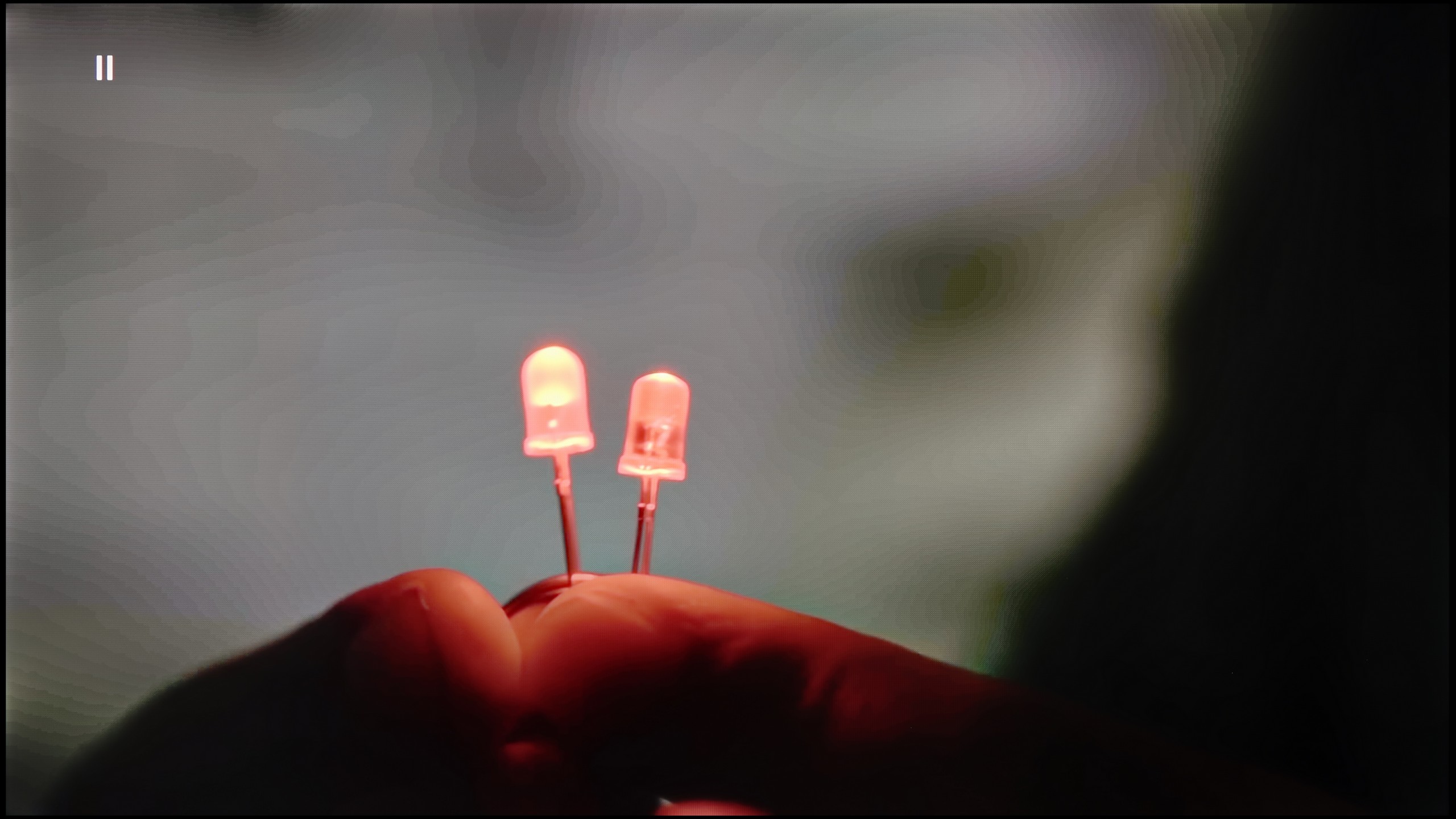
Image without overscan on the SD signal


How does the Xiaomi A Pro 2025 television cope with tonal transitions, especially with lower-quality materials? Thanks to advanced digital processing, the colour contour removal function works surprisingly well. We recommend setting this option to "Medium" – the television significantly improves the fluidity of tonal transitions while avoiding excessive smoothing of other image elements, such as film grain.
In the case of the tested image featuring a model and numerous branches in the background, the Xiaomi A Pro 2025 showcased its capabilities in terms of digital processing. Adding artificial sharpness to this scene made the details of the model more pronounced, and her hair appeared more detailed. However, delicate contours appeared around the branches in the background, which were a result of digital interference. Although this enhances the overall impression of detail, excessive sharpness can make some elements of the image seem unnaturally emphasised.
There are situations where we would like to smooth out tonal transitions a bit, especially in older materials – those with limited source quality. The U7Q is equipped with a feature called "Smooth and Gradient Image," but unfortunately... it works very poorly. In the "Low" option, the effects are practically unnoticeable, and other settings smooth details but do not improve tonal transitions. The only positive aspect is that the feature does not interfere with film grain, so it does not ruin the natural structure of the image.
Fortunately, upscaling content performs quite well. The image is not excessively sharpened, and there is no artificial clarity – and although it is known that this is not the level of high-end televisions, the U7Q handles displaying really old content in a completely acceptable manner without any issues.
Blur and motion smoothness
4.3/10
7.5/10


Blur (native resolution, maximum refresh rate):






Blur (BFI function enabled):



Smużenie ():
Smużenie (1080p 240Hz):

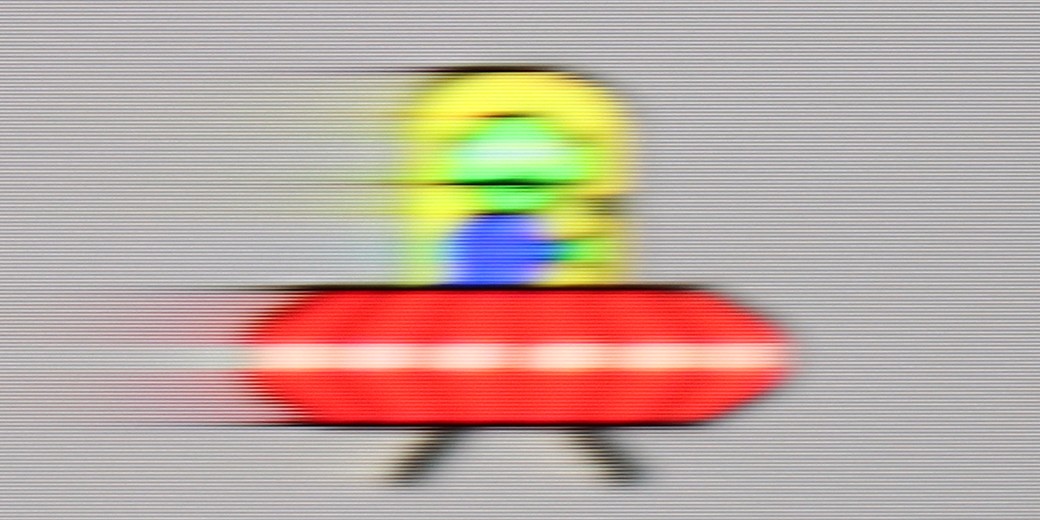

Xiaomi A Pro 2025 offers a motion smoothing feature called "Motion Smoothing," which primarily works in films. It can be adjusted to prefer either a more cinematic, film-like effect with visible frames, or a smoother, theatre-like image. This function should satisfy those who intend to watch mainly films on it. However, gamers and sports fans may feel disappointed. The 60 Hz refresh rate panel, typical in this price range, does not impress. Our "Ufo" test revealed some motion blur. Those expecting better sharpness of moving objects may be slightly let down.
U7Q is indeed a very fast television, just like its more powerful version "PRO". At a resolution of 4K, it supports up to 144 Hz refresh rate, and if someone wants even more – in Full HD, you can achieve up to 240 Hz! This will mainly benefit PC gamers, but it is worth appreciating – it is a rarely seen feature in this price segment. Right from the start, it is clear that the U7Q has been designed with dynamic content in mind, such as games or sport. In films, we are not left "out in the cold" either – the U7Q offers an "Ultra Motion Smoothness" feature, where using two sliders you can adjust whether you prefer a smoother, theatrical image or something closer to a cinematic style with a visible film frame. It is good that, as with most manufacturers, we have a choice here as well and can adjust it to our own preferences.
Console compatibility and gaming features
3.3/10
8.5/10
- ALLM
- VRR
- VRR range48 - 240Hz
- Dolby Vision Game Mode
- Correct implementation of HGIG
- 1080p@120Hz
- 1440p@120Hz
- 4K@120Hz
- Game bar



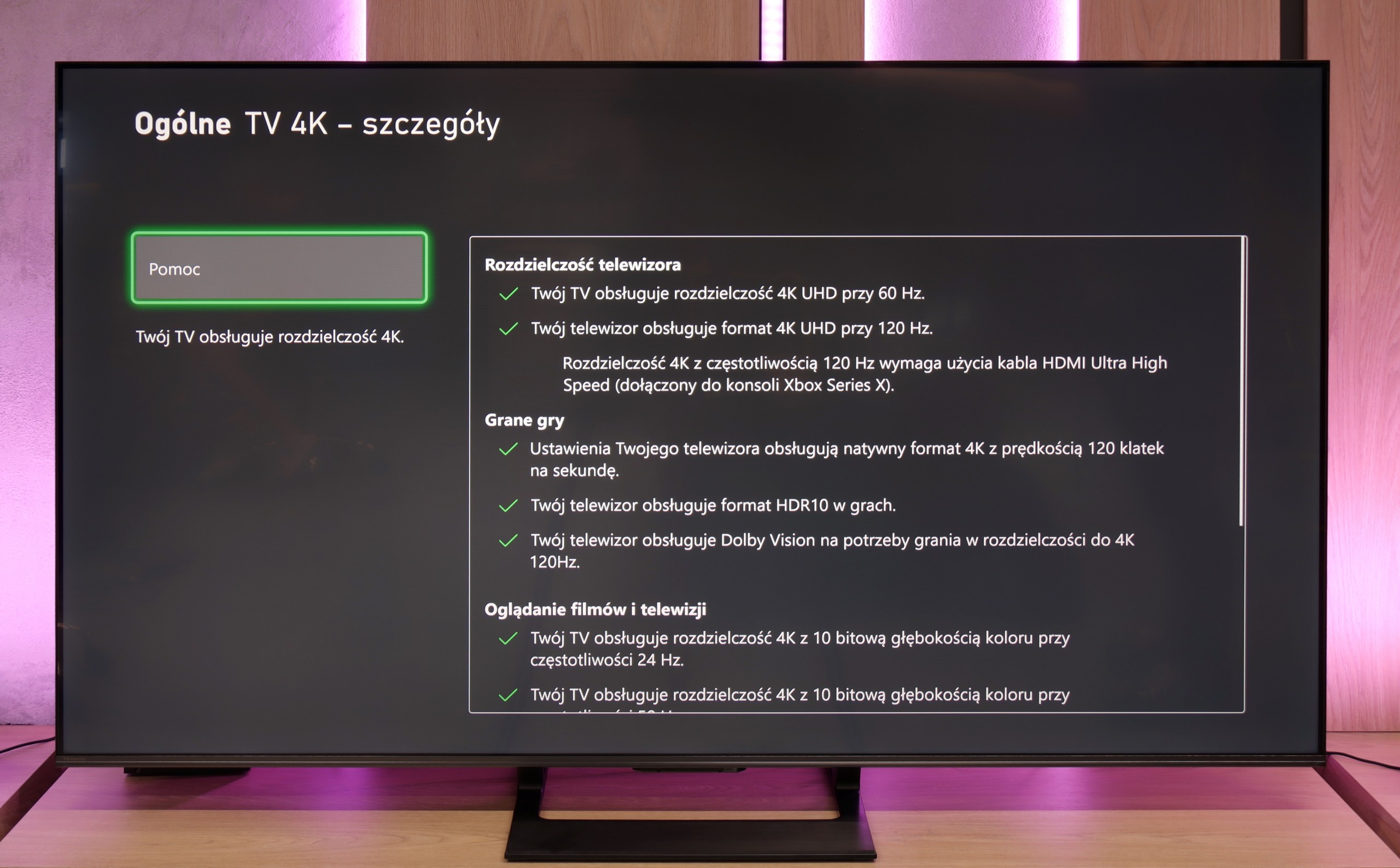



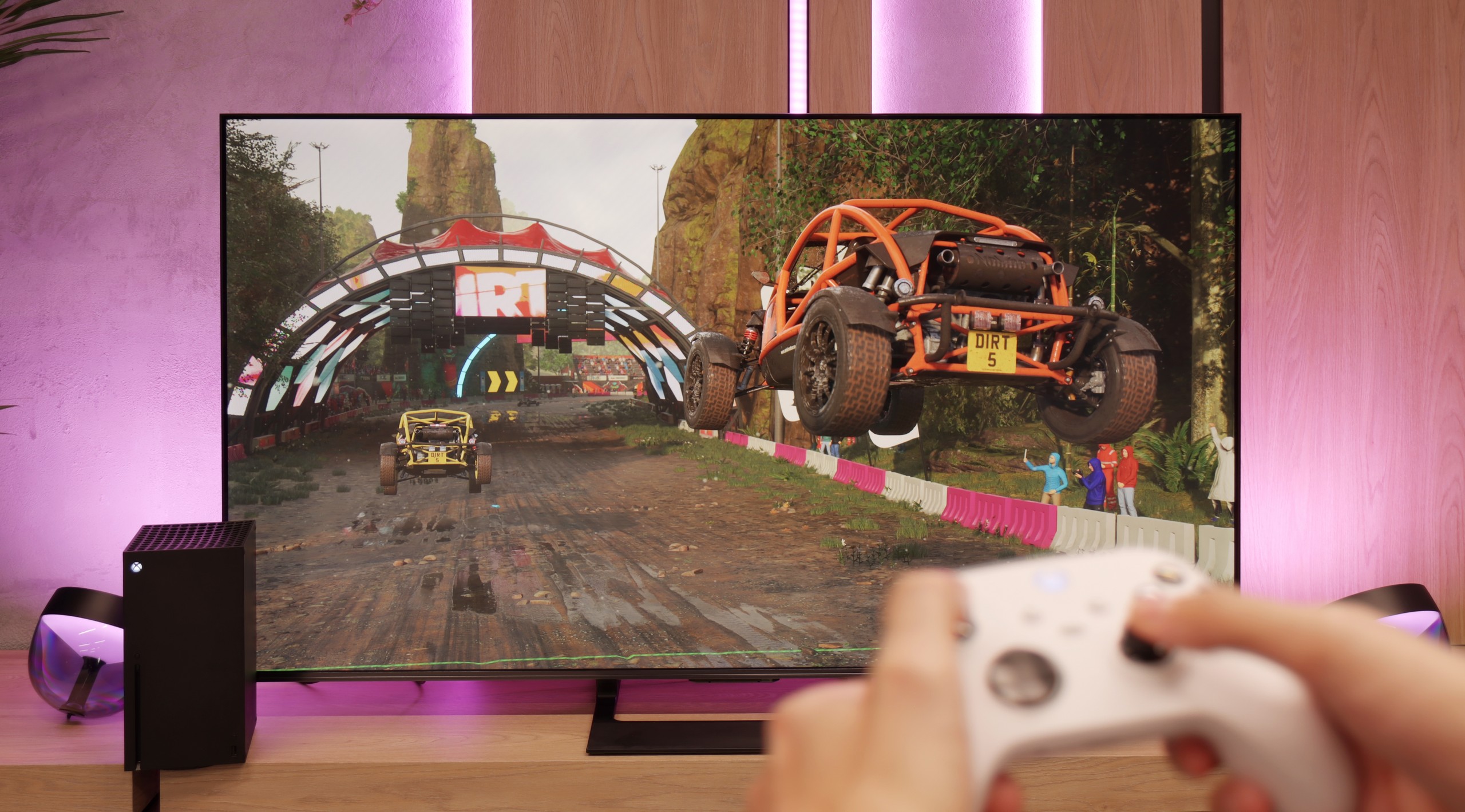
Xiaomi A Pro 2025 offers several features useful for gamers, including Game Bar, which is different from the typical "dashboards" with interfaces found in other manufacturers' products. Thanks to this, users can quickly access game-related settings, which is convenient during intense sessions. The TV also supports Automatic Low Latency Mode (ALLM), meaning it automatically switches to a mode optimised for gaming, reducing signal latency. Unfortunately, it lacks support for HDMI 2.1, limiting its capabilities for connecting the latest gaming consoles that may require higher bandwidth. Additionally, the TV does not support features such as VRR (Variable Refresh Rate) or G-Sync, which are increasingly desired by gamers, as they allow for smoother visuals and eliminate tearing. For these reasons, although Xiaomi A Pro 2025 has some features for gamers, in this price range, better options can be found that offer more advanced solutions dedicated to gamers.
The Hisense U7Q is a television designed with gamers in mind – and this is immediately evident from its gaming capabilities. It has practically everything you could wish for: variable refresh rate (VRR) – check, automatic game mode (ALLM) – check, and on top of that, high refresh rates of up to 240 Hz in Full HD and support for various resolutions, not just 4K. This is truly a great set of features that makes the U7Q perform well both in fast-paced first-person shooters on consoles and in more demanding titles on PC. Of course – as with most Hisense models – there is a lack of proper implementation of the HGiG feature. It's a shame because HGiG allows console brightness to be matched to a specific television, which in practice makes displaying HDR games according to the creators' intent much easier. Without this, you simply have to reckon with certain limitations in the final HDR image in games.
Input lag
9.8/10
9.7/10
SDR
HDR
Dolby Vision
Xiaomi A Pro 2025 achieves remarkable results, regardless of the resolution or HDR mode. With measurements at just 15 ms, this television ranks among the top in terms of responsiveness.
The input lag on the U7Q is really impressive. With 120 Hz content, we measured around 9 ms, and with 60 Hz – around 17 ms. These are exceptional results that make the television excellent for even dynamic games requiring quick reactions. It's hard to criticise anything here. Of course, as is often the case, the Dolby Vision mode in games seems to be a bit slower compared to classic SDR or HDR. This will be particularly noticeable for users of Xbox Series X/S consoles, which are the only ones supporting Dolby Vision Gaming. Fortunately, the input lag remains below 30 ms, so in practice, this is still an acceptable level even for more demanding gamers.
Compatibility with PC
1/10
8.8/10

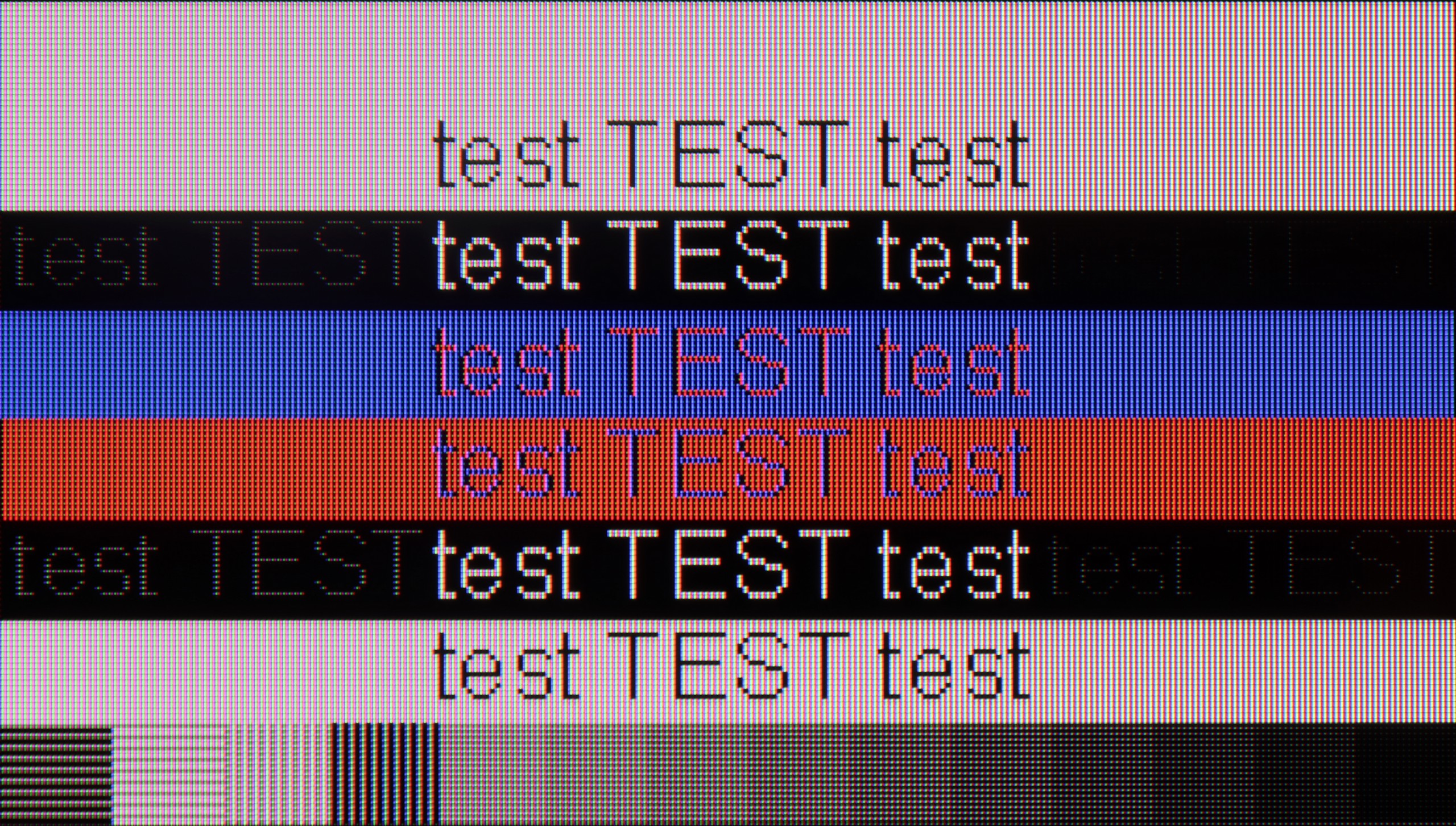
In the category of cooperation with PC, Xiaomi A Pro 2025 performs very poorly. The fonts are of low quality, and their display on the screen is often problematic. Dithering is ubiquitous; when the fonts are enlarged on a dark background, they are displayed in three colours, which is definitely glaring and can significantly hinder comfortable use of the device. Such problems can be a significant downside for users who plan to use the television as a computer monitor.
The U7Q communicates excellently with the computer. For gamers, this is great news – we have high refresh rates, low input lag, and G-SYNC support, making gameplay from a PC pure enjoyment. But the U7Q also performs well in everyday tasks. If someone uses the computer for word processing, browsing the internet, or office work – there’s nothing to complain about. The TV correctly handles chroma 4:4:4, so fonts look sharp and clear, without blurriness or odd contours. Both small and capital letters are simply readable – just as it should be.
Viewing angles
2.6/10
3/10
In the category of viewing angles, Xiaomi A Pro 2025 with a VA panel performs quite poorly. Although you can enjoy better blacks when viewed head-on, from side perspectives, the image loses quality. Our specialists noticed during the testing of the television that sitting a metre away from the device, the image on the right side appeared brightened and desaturated. However, moving a bit to the side improves everything, which demonstrates the significant difference in image reception depending on the viewing angle. All of this means that the experience of watching in a larger group may be less satisfying.
The viewing angles on the U7Q are rather poor – this is simply characteristic of VA panel qualities. Directly in front, everything looks very good: blacks are deep, colours are saturated, and contrast is high. However, just moving slightly to the side causes the picture to start losing quality – colours become washed out, and blacks begin to resemble dark grey. Compared to televisions with IPS panels, the U7Q performs worse, although on the other hand, it makes up for it with better contrast and deeper blacks.
TV efficiency during daytime
3.8/10
6.2/10

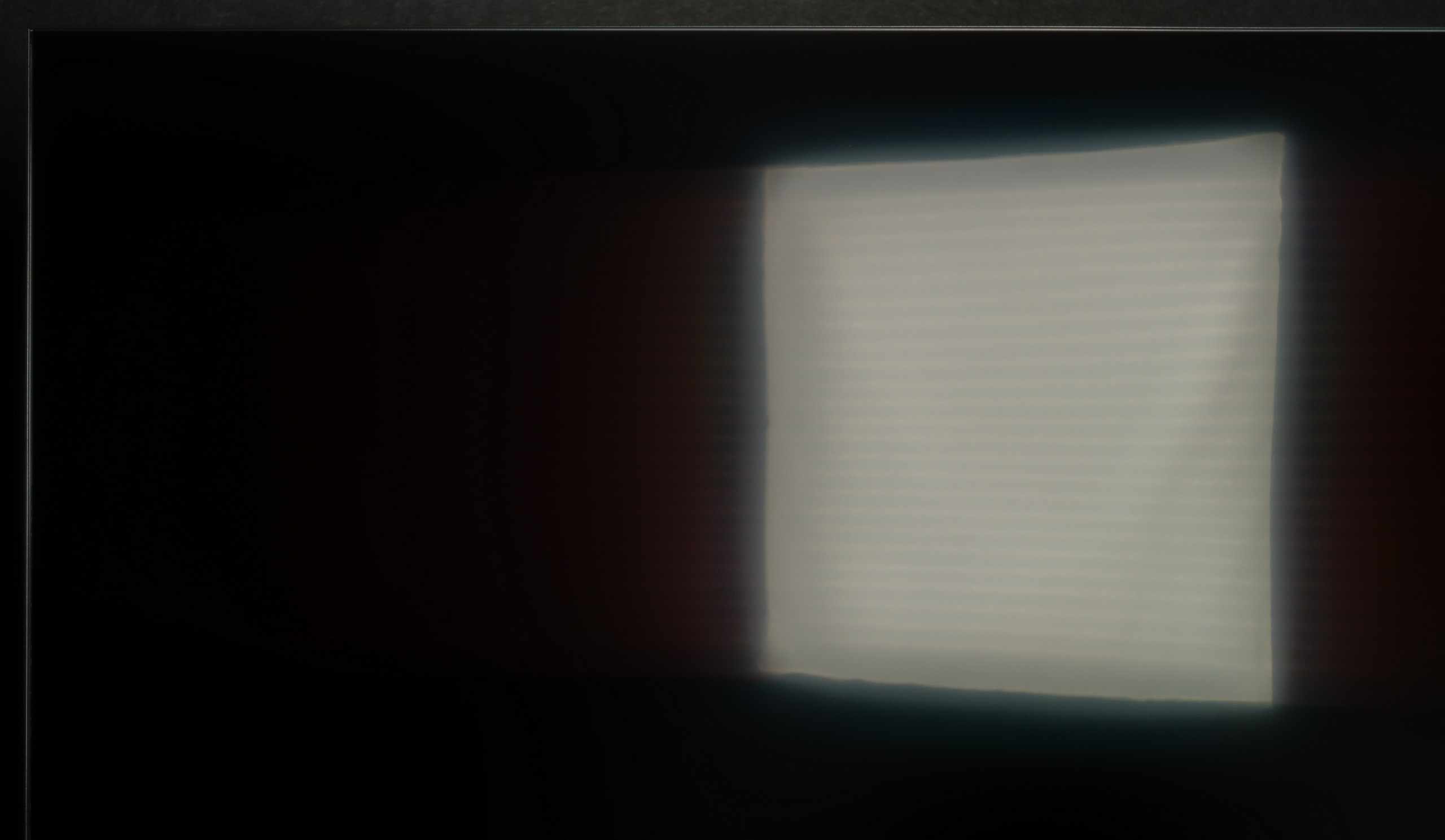


Matrix brightness
Average luminance SDR
Hisense U7Q: 519 cd/m2
XIAOMI A PRO 2025: 249 cd/m2
Xiaomi A Pro 2025 presents itself as average. The panel coating is satin, which may help reduce reflections, but the suppression of glare is average. The brightness of the television is only 250 nits, which is a relatively low result compared to other models on the market. As a result, on sunny days or in brightly lit rooms, the picture quality may suffer, and details may be difficult to perceive.
The U7Q performs quite well in a sunlit room. The brightness in SDR mode averages around 520 nits, which practically means that even on a sunny day, it is easy to comfortably watch television – without the feeling that everything is drowned in reflections. Additionally, thanks to the satin coating on the panel, the television does a good job of suppressing reflections.
Details about the matrix
Subpixel Structure:

Panel uniformity:


XIAOMI A PRO 2025
Hisense U7Q
TV features
6.5/10
9/10
- HDMI inputs3 x HDMI 2.0, 0 x HDMI 2.12 x HDMI 2.0, 2 x HDMI 2.1 48Gbps
- Other inputsRCA (Chinch)RCA (Chinch)
- OutputsToslink (Optical audio), eARC (HDMI), ARC (HDMI)Toslink (Optical audio), eARC (HDMI), ARC (HDMI), Mini-Jack (Headphones)
- Network InterfacesWi-Fi 2.4GHz, Wi-Fi 5GHz, Ethernet (LAN) 100MbpsWi-Fi 2.4GHz, Wi-Fi 5GHz, Ethernet (LAN) 100Mbps
- TV receptionDVB-T, DVB-T2, DVB-S, DVB-S2, DVB-CDVB-T, DVB-T2, DVB-S, DVB-S2
Classic features:
- Recording to USB (terrestrial TV)
- Recording programming
- Picture in Picture (PiP)
- RF remote control (no need to aim at the screen)
- Backlit remote control
- Teletext
- Audio only mode
- Possibility to connect Bluetooth headphones to the TV
- Possibility to simultaneously use Bluetooth headphones and the TV speaker
Smart features:
- AirPlay
- Screen mirroring (Windows Miracast)
- Wyszukiwanie głosowe
- Voice search in native language
- Ability to connect a keyboard and mouse


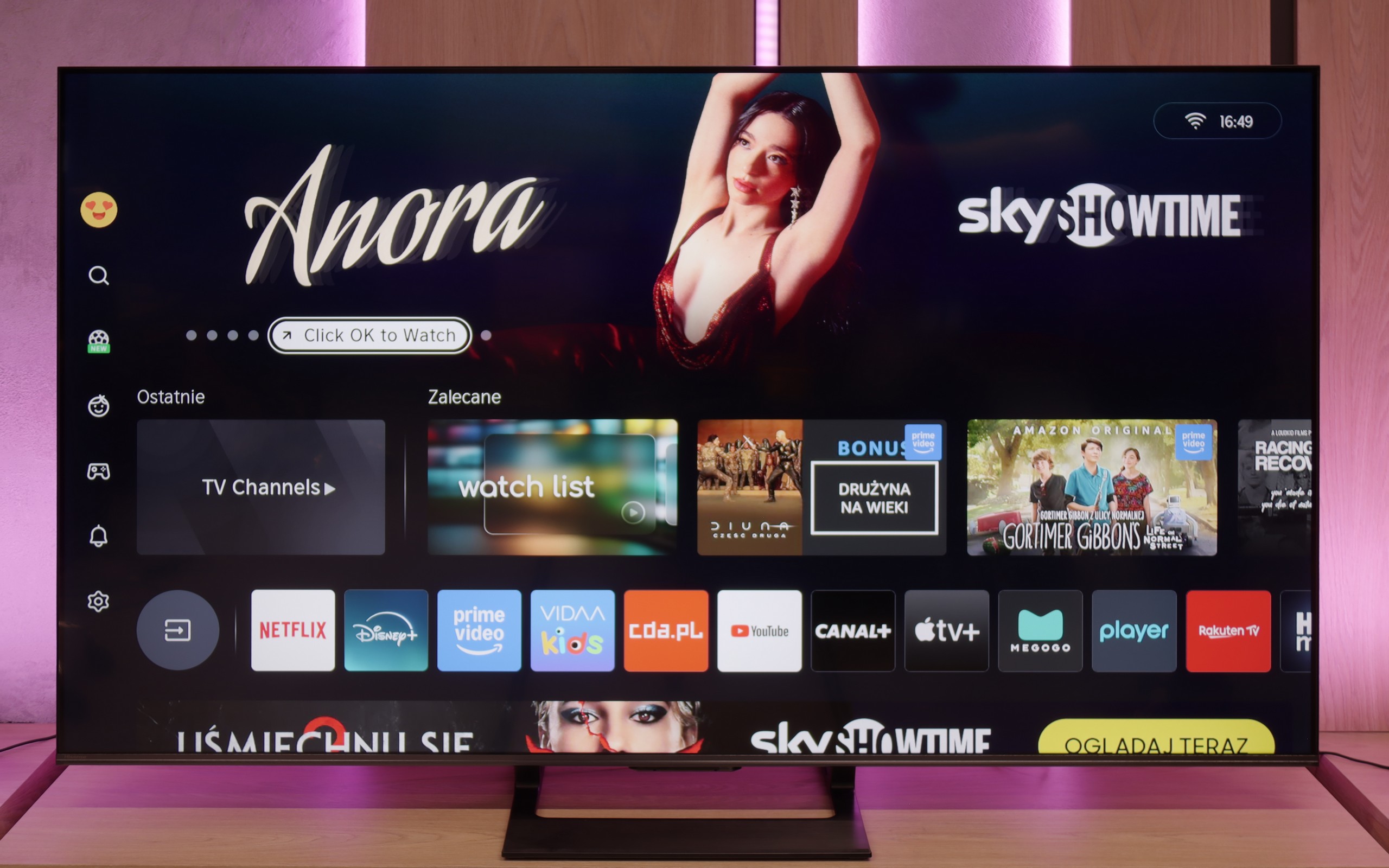

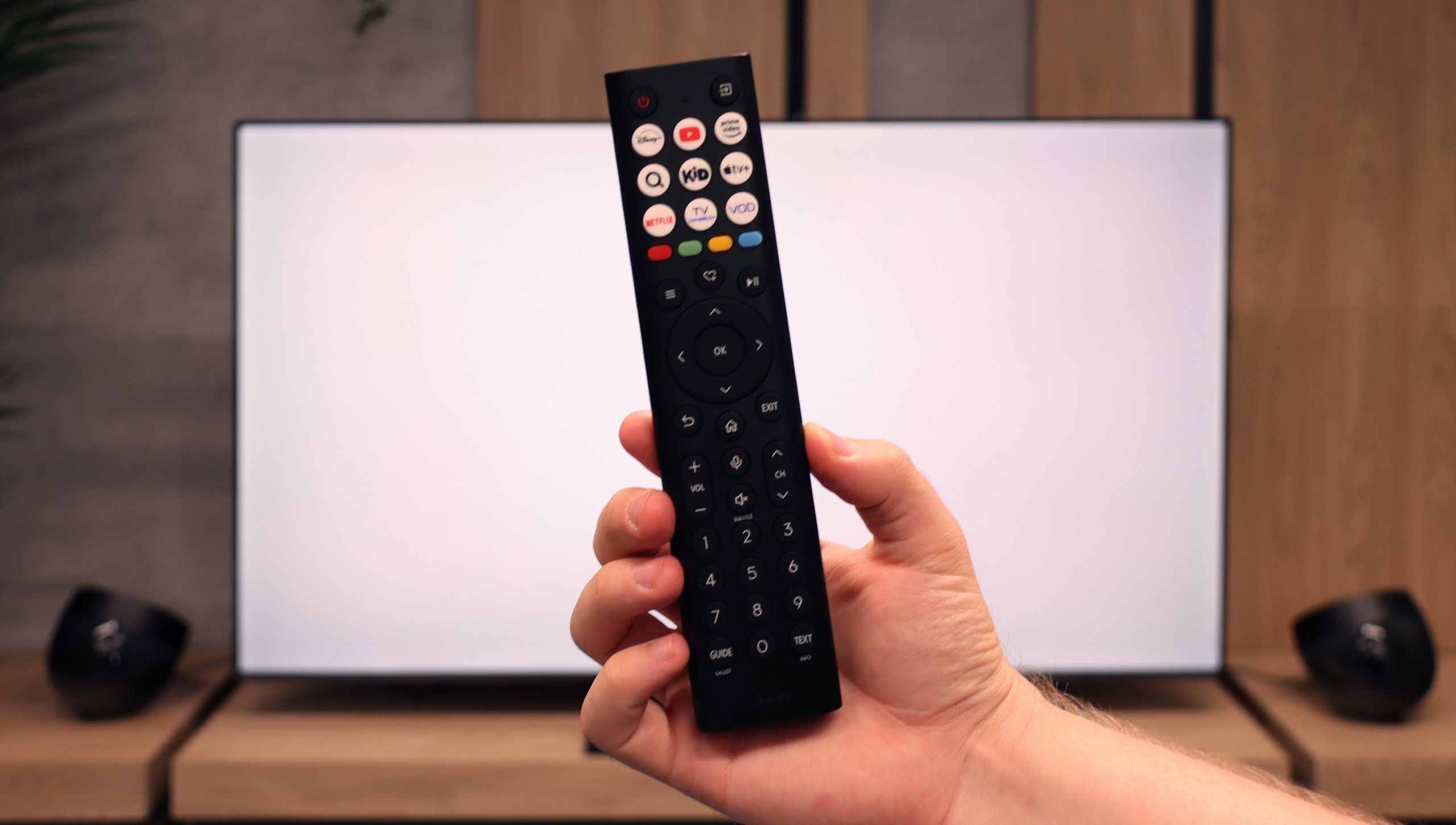
In terms of functionality, Xiaomi A Pro 2025 stands out with the Google TV system, which is one of its biggest advantages. This allows users access to a wide range of apps and streaming services, greatly enhancing the convenience of using the television. The Google TV system also offers a voice assistant that simplifies navigation and allows for quick content searches without the need to browse through menus. One of the key benefits of this system is the ability to download virtually unlimited applications from the Google Play Store, enabling users to personalise the television according to their individual needs. Users can install streaming apps, games, and various tools, making the television a multimedia entertainment hub. However, it is worth noting that this model does not have recording functions or AirPlay, which may be disappointing for some users. Additionally, there are quite significant lags in the operating system, affecting user experience. On the plus side, it is also possible to pair other peripheral devices via Bluetooth, and the remote control does not require aiming at the screen, which significantly improves usability. Despite some shortcomings, Xiaomi A Pro 2025 has the potential to satisfy the needs of users looking for a modern television.
Classic features of U7Q
Hisense U7Q has quite a lot to offer when it comes to classic TV features. You can record programmes to USB, connect external devices via Bluetooth without any hassle, and the interface – such as the EPG – is clear and easy to read. It may sound like something mainly appreciated by seniors, but the truth is that U7Q has practically everything needed for watching traditional television. The only thing missing here is the PiP (picture-in-picture) feature.
Smart TV U7Q: Vidaa
As for Smart features, the U7Q runs on the proprietary VIDAA system. And it must be admitted – it operates really smoothly. Voice search in Polish? No complaints. AirPlay and screen mirroring? They work without any issues as well. Of course, one must be aware that VIDAA is a closed system, so – as is often the case – it lacks some popular applications, especially those related to music. Therefore, before purchasing, it is worth checking whether all the applications you use regularly are available.
Playing files from USB
6.8/10
8.2/10
Supported photo formats:
Maximum photo resolution:


Xiaomi A Pro 2025 offers a decent built-in media player that meets basic user expectations. However, the television has its drawbacks and sometimes encounters issues with playing certain file formats, which can be frustrating. Fortunately, with access to the Google Play Store, users can easily download alternative players that better meet their needs. In our test of the Xiaomi TV A Pro 2025, we demonstrated that its compatibility with applications is high, and additional media playback apps work flawlessly. It is also worth noting that the Xiaomi TV A Pro 2025 is equipped with the Android TV platform, allowing access to a wide range of applications and streaming services. Installing alternative media players improves the overall functionality of the device and eliminates compatibility issues with formats. As a result, the Xiaomi A Pro becomes a more versatile television that can meet the diverse expectations of users, even those with higher demands when it comes to media playback.
The built-in player in the U7Q fully meets the needs of most future users. The television handles Polish characters effortlessly and supports most popular video, audio, and image formats. If we had to nitpick, it would only be about the limited support for certain image resolutions – there are instances when files from a camera are not displayed correctly. So it's worth keeping this in mind if you plan to present photos straight from a DSLR or phone.
Apps
9.6/10
7.7/10














































Sound
6/10
7.8/10
- Subjective sound quality:6/107.8/10
- Dolby Digital Plus 7.1:
- Dolby True HD 7.1:
- Dolby Atmos in Dolby Digital Plus (JOC):
- Dolby Atmos in Dolby True HD:
- DTS:X in DTS-HD MA:
- DTS-HD Master Audio:
When it comes to sound, Xiaomi A Pro 2025 is impressively positive, especially considering its price. The sound quality is truly solid, and the audio does not deviate from what one would expect in this class. Additionally, the television supports DTS audio formats, which are often lacking in much more expensive TVs. It is worth noting that this assessment is subjective and may vary depending on individual preferences.
Sound is one of the bigger advantages of the U7Q. The television sounds really pleasant – there is a slightly noticeable bass, good tone balance, and definitely something more than just for "daily news watching." You can easily play music on it and simply sit back and enjoy the sound – of course in an entertaining form, not an audiophile one 😉. Full support for the most important audio codecs also deserves a big plus, as they worked flawlessly. A small exception is Dolby Atmos in TrueHD version, which didn’t fully play when connected to the home cinema, so if someone uses this format – it’s worth keeping in mind – it might be a software issue.


